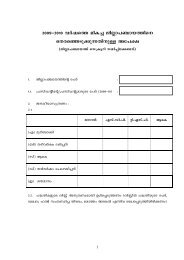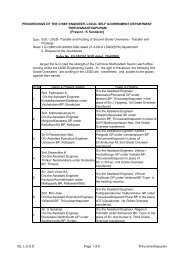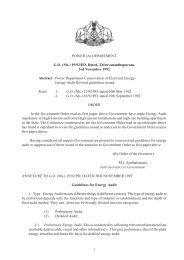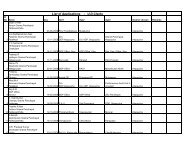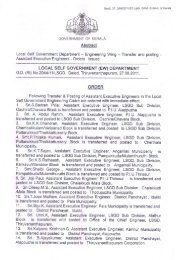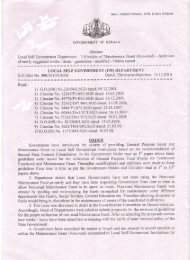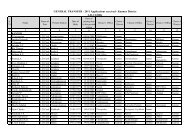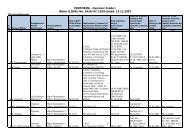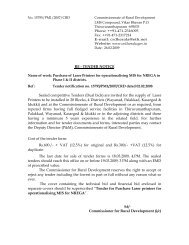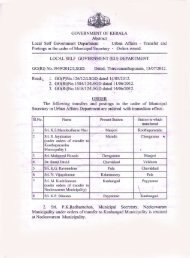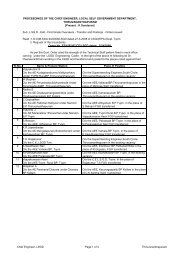Chapter 2 - Kerala Govt Logo
Chapter 2 - Kerala Govt Logo
Chapter 2 - Kerala Govt Logo
- No tags were found...
Create successful ePaper yourself
Turn your PDF publications into a flip-book with our unique Google optimized e-Paper software.
Environmental Assessment Report<strong>Kerala</strong> Local Government Strengthening Projectof the exercise of power and accessing more information. As barriers are weaker in the localsituation, the poor can hope to break them with some effort.There have also been certain problems, which are enumerated below:1. The outliers like Scheduled Tribes are still to gain from decentralisation.2. The poorest among the poor need social safety nets particularly for food and healthemergencies. This cannot be provided by local governments.3. The management of services particularly health and education has not been more efficientthan before and these services have direct implications for poverty reduction.4. The flow of bank credit into local schemes for poverty reduction has been rather limitedresulting more from bankers' reluctance to deal with local governments than frominadequacies of project formulation. This has resulted in higher subsidies.5. In a State like <strong>Kerala</strong> where the number of educated poor is very high there is an inherentlimitation in local government action against it. Linkage with job markets through skillupgradation or identification of self employment opportunities or small scale productionactivities with assured markets are all functions which can be done better at higher levels.Thus the problem of vertical integration of anti poverty programmes is a crucial one. Antipovertyinitiatives at the local level seem to be characterized by incrementalism and there is aclear need for a long range vision to reduce poverty.2.3.3.10. Watershed Development ProgrammesAttappady Environmental Conservation and Wasteland Development Project : AttappadyHills Area Development Society (AHADS) is implementing this project. The JBIC assistedExternal Aided Project was extended up to 2010 based on the Rationalized FinalImplementation Plan (RFIP). This project aims at: Afforestation, Production of Seedlings,Production of fencing posts, Conservation of Forest land, Conservation of Check Dams,Construction of Contour bunds, Construction of drainage canals, Construction of Pits &Structures, and Employment Generation.Integrated Wasteland Development Programme (IWDP)/HARIYALI (State Share 8.33%): Theschemes aim at empowering the Panchayat Raj institutions, both financially andadministratively, in the implementation of watershed development programmes. Mainobjectives of this scheme are the following.Harvesting every drop of rainwater for drinking water supply, irrigation, pasturedevelopment, fisheries, plantations including horticulture and floriculture, etc.Employment generation, poverty alleviation, community empowerment and developmentof human and biological resources of the rural areas.Mitigating the adverse effects of extreme climatic conditions, such as, drought anddesertification on crops, human and livestock population, etc.Restoring ecological balance by harnessing, conserving and developing natural resources,i.e., land, water, vegetative cover especially plantations.Encouraging village community towards sustained community action for the operation andmaintenance of assets created and further development of the potential of the naturalresources in the watershed.84




